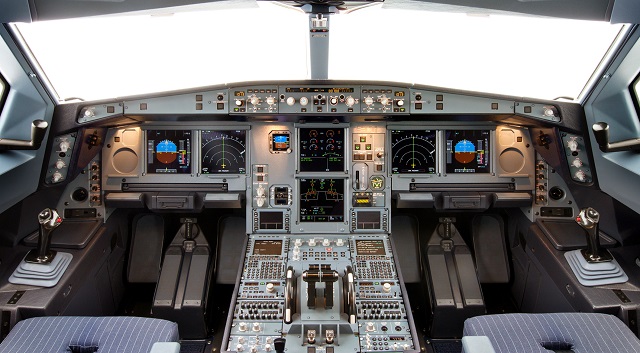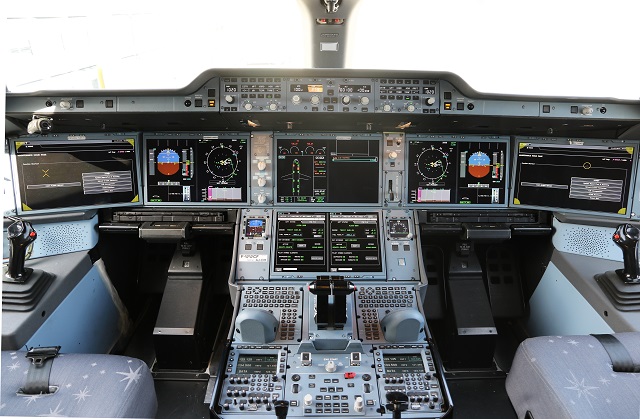With the A350 conceived as the natural replacement in the Airbus product line for the A330 family, the manufacturer had to ensure the desire to introduce advanced technology into the new twinjet did not create too big a step for pilots transitioning from the earlier type.
While on the face of it, the new cockpit with its six huge glass display screens looks a world apart from its predecessor, the reality is that once crews have undergone conversion training the two environments feel very similar, says Christian Norden, head of A350 flight crew training at Airbus.
“When A330 pilots first enter the A350 cockpit they say ‘that’s totally different, that won’t work’, because this is not the A330,” says Norden. “At the end of the conversion course, they make their first take-off and first landing in the A350, and everyone so far has said ‘it’s an A330’.”

The A330's flightdeck (above) looks very different to the A350's (below)....
The A330 and A350 have approval from the European Aviation Safety Agency and the US Federal Aviation Administration for a common type rating. “So every A330 pilot can say ‘hey, I’m an A350 pilot already,’” quips Norden.
“One EASA pilot commented that the handling is so similar that you could probably make a common rating between the A320 and A350. But we are not bold enough yet to try that.”
There is an eight-day differences training course to enable A330 pilots to add the A350 to their rating, including a four-day ground course and four days of systems training, explains Norden.
Early A350 customer Finnair plans to make full use of the common rating, he adds. “From September onwards Finnair plans to make A330/A340/A350 common rating.”

...but flightcrews report no issues with common rating after training
Airbus is currently working on the differences programme between the A380 and A350, with a five-day course being targeted, says Norden. “We have to make a little bit of manoeuvring training because coming from a quad to a twin, engine-out handling is different. So we have to make use of a full-flight simulator.”
The programme is likely to comprise a two-day ground course, two days in the simulator and a one-day skills test, he adds.
Source: Flight International























